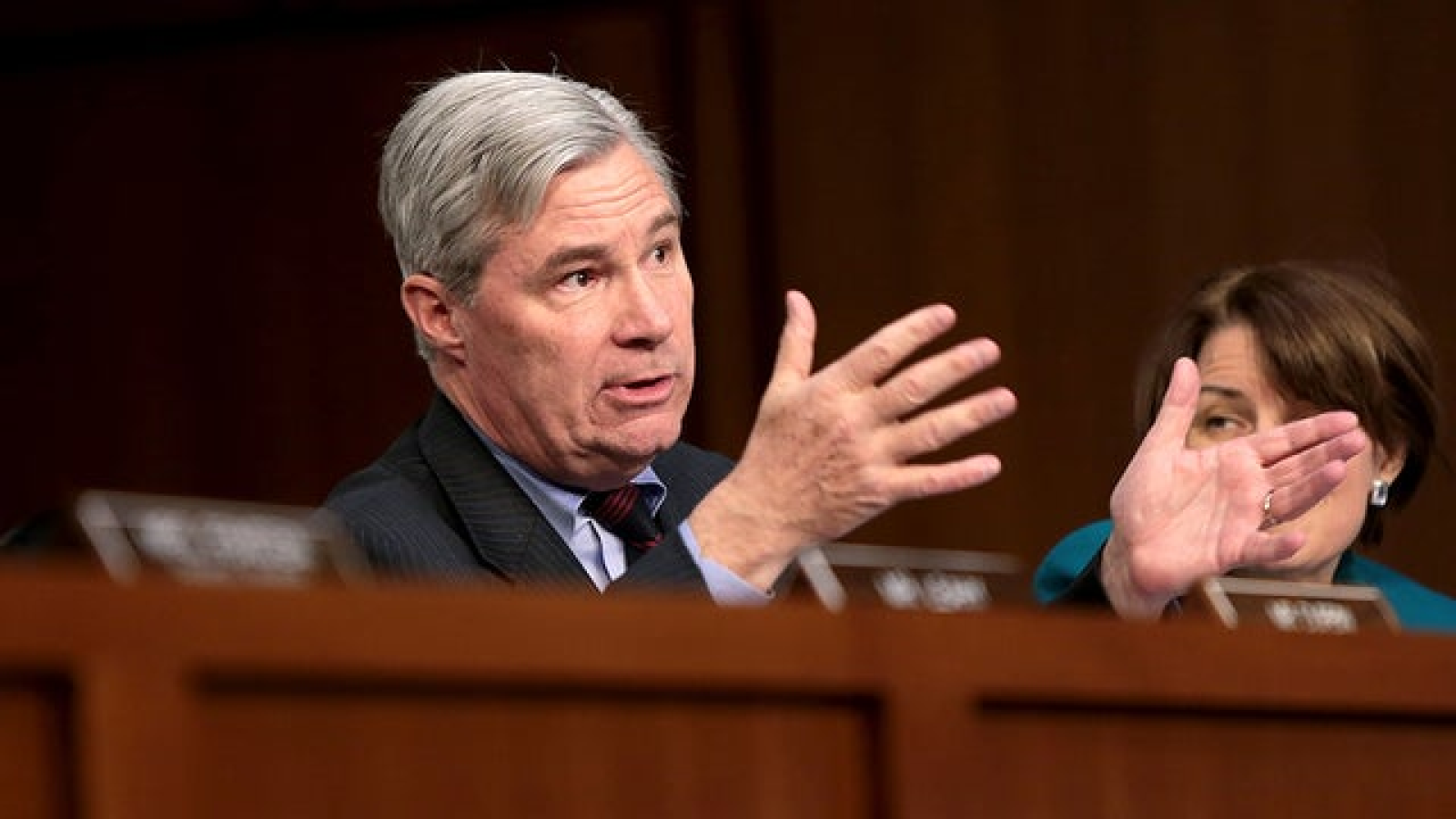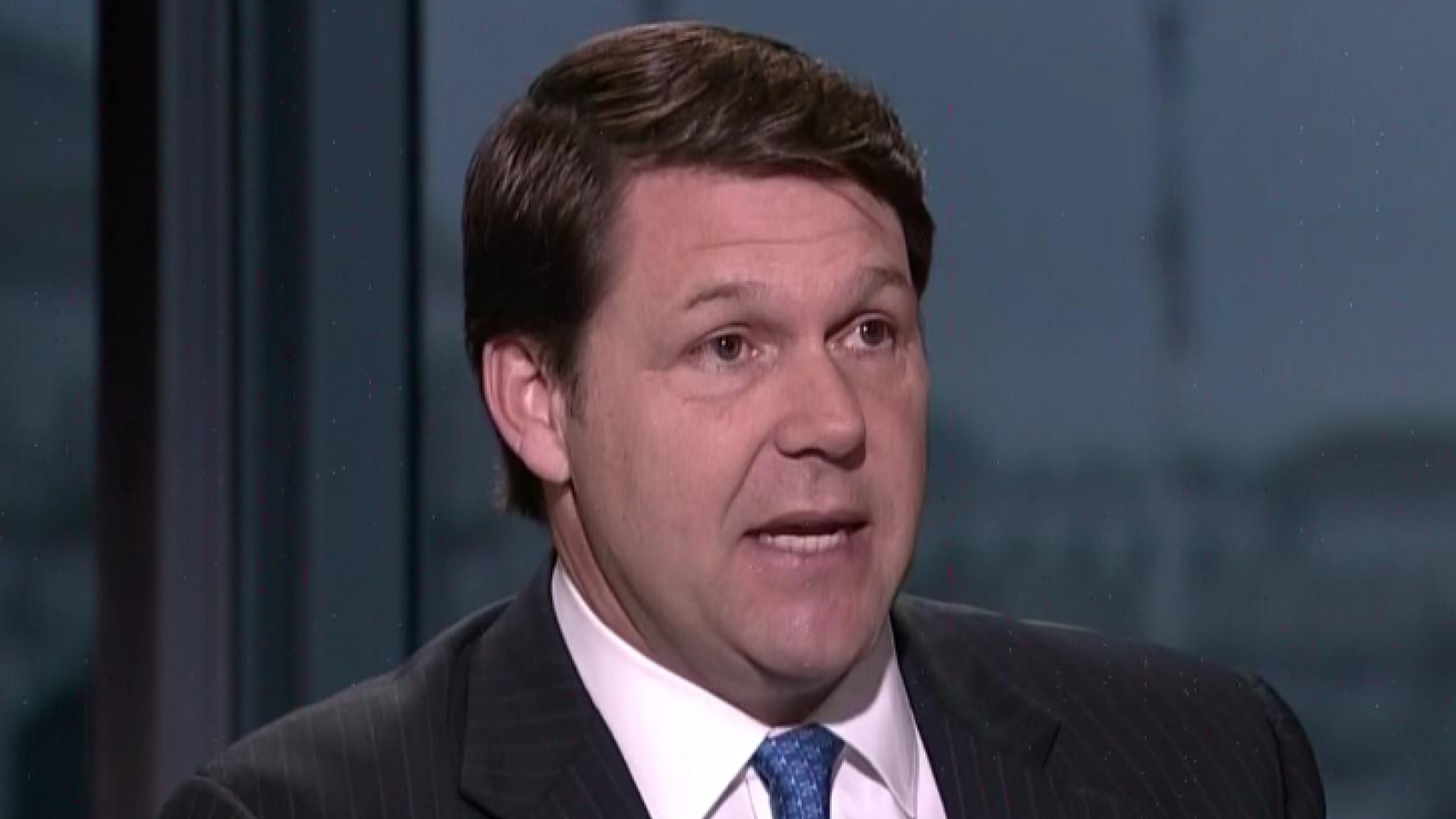Summary
This post on Regulations is 1 of 3 issues that US onAir curators are focusing on in the Governance category.
In the law of the United States, the Code of Federal Regulations (CFR) is the codification of the general and permanent regulations promulgated by the executive departments and agencies of the federal government of the United States. The CFR is divided into 50 titles that represent broad areas subject to federal regulation.
OnAir Post: Regulations
News
PBS NewsHour – April 19, 2024
The Biden administration put out new Title IX rules that will increase protections for LGBTQ+ students and change how schools handle cases of campus sexual assault. It reverses several moves made by the Trump administration. William Brangham discussed the changes with Laura Meckler of The Washington Post.
About
Check the Governance post for the party positions, committees, government agencies related to issues.
Challenges
Complexity and Volume:
- Overlapping regulations from various agencies and jurisdictions
- Enormous volume of rules and interpretations
- Difficulty for businesses to navigate compliance requirements
2. Regulatory Capture:
- Influence of industry groups on rulemaking
- Potential for regulations to favor specific interests at the expense of public welfare
3. Lack of Coordination:
- Siloed approach among regulatory agencies
- Inconsistent or conflicting regulations
- Duplication of efforts and inefficiencies
4. Lack of Transparency:
- Inaccessible or opaque rulemaking processes
- Limited public involvement and scrutiny
- Potential for arbitrary or poorly reasoned regulations
5. Enforcement Disparities:
- Variations in enforcement actions across jurisdictions
- Lack of consistent penalties for violations
- Selective or overzealous enforcement practices
6. Resource Constraints:
- Limited funding and staff for regulatory agencies
- Difficulty keeping pace with technological advancements and societal changes
- Challenges in enforcing complex regulations effectively
7. Global Considerations:
- Increasingly interconnected global economy
- Need for harmonization and recognition of regulations across borders
- Challenges in managing extraterritorial regulation
8. Regulatory Burden on Small Businesses:
- Disproportionate impact of regulations on small businesses
- Compliance costs, administrative burdens, and market barriers
- Need for targeted regulations and support programs
9. Innovation and Technological Advancements:
- Rapidly evolving technology
- Challenges in regulating emerging industries and technologies
- Need for regulatory agility and flexibility
10. Public Trust and Confidence:
- Erosion of public trust in regulatory processes
- Perceived biases, favoritism, or inefficiencies
- Importance of fostering transparency, accountability, and responsiveness
Source: Google Search + Gemini + onAir curation
Solutions
Compliance Management Systems (CMS)
- Implement robust CMSs to track compliance, monitor risks, and identify areas for improvement.
- Automate compliance workflows and leverage technology to streamline processes.
- Establish clear roles and responsibilities for compliance within the organization.
2. Regulatory Awareness and Training
- Provide comprehensive training on all applicable regulations to relevant employees.
- Ensure employees understand their obligations and actively participate in compliance efforts.
- Keep abreast of regulatory changes and updates.
3. Data Management and Security
- Establish secure data handling procedures to protect sensitive information.
- Implement robust cybersecurity measures to prevent data breaches and unauthorized access.
- Adhere to data privacy regulations and industry best practices.
4. Internal Audit and Monitoring
- Conduct regular internal audits to assess compliance effectiveness and identify areas of weakness.
- Implement continuous monitoring processes to track performance and ensure ongoing adherence.
- Seek independent certification or accreditation to demonstrate compliance.
5. Risk Management Framework
- Develop a comprehensive risk management framework that identifies and assesses potential regulatory risks.
- Implement mitigation strategies and controls to minimize the likelihood and impact of compliance failures.
- Monitor risk metrics and adjust strategies as needed.
6. Collaboration and Communication
- Foster open communication within the organization and with external stakeholders, such as regulators and auditors.
- Establish clear lines of communication for reporting compliance concerns and incidents.
- Proactively address concerns and demonstrate a commitment to transparency and accountability.
7. Third-Party Management
- Conduct due diligence on third parties and assess their compliance capabilities.
- Establish clear contractual obligations for compliance.
- Monitor third-party performance and take appropriate action to mitigate risks.
8. Legal Counsel and External Advisors
- Seek guidance from qualified legal counsel and external advisors on complex regulatory issues.
- Regularly consult with industry experts and participate in regulatory professional development opportunities.
9. Continuous Improvement
- Establish a culture of continuous improvement and regularly review and update compliance processes.
- Seek feedback from employees, stakeholders, and regulators to identify areas for improvement.
- Leverage technology and automation to enhance efficiency and effectiveness.
10. Corporate Governance
- Ensure that the board of directors and senior management are actively involved in compliance oversight.
- Establish clear policies and procedures for ethical conduct and compliance.
- Promote a strong ethical culture throughout the organization.
Source: Google Search + Gemini + onAir curation
Websites
Official Websites:
- Environmental Protection Agency (EPA) US Regulations Page
- Occupational Safety and Health Administration (OSHA) Regulations Page
- Federal Register
Informational Websites:
- CHASSP, Center for Hazardous Substance Research
- Chemical Safety International
- National Fire Protection Association (NFPA)
- American Conference of Governmental Industrial Hygienists (ACGIH)
Compliance Assistance Resources:
- National Environmental Technology Information Exchange (NETIE)
- Compliance Assistance Clearinghouse
- Alliance for Hazardous Materials Safety and Management
Training and Education:
Other Relevant Websites:
- US Department of Labor, Wage and Hour Division
- Environmental Stewardship Initiative
- National Safety Council
Source: Source: Google Search + Gemini + onAir curation Regulatory Flexibility Act (1980) Paperwork Reduction Act (1980) Small Business Regulatory Enforcement Fairness Act (1996) Unfunded Mandates Reform Act (1995) Congressional Review Act (1996) E-Government Act (2002) Regulatory Accountability Act (2015) Additional Key Initiatives Source: Google Search + Gemini + onAir curation Sampling of Bills: H.R.3013 — LICENSE Act of 2023 S.2860 — Secure And Fair Enforcement Regulation Banking Act 1. Regulatory Oversight and Accountability Act of 2023 (H.R. 573) 2. Small Business Regulatory Relief Act of 2023 (S. 181) 3. Technology for Regulatory Efficiency Act of 2023 (H.R. 123) 4. Administrative Procedure Act Modernization Act of 2023 (S. 256) 5. Reducing Excessive Regulation for Economic Growth Act of 2023 (H.R. 321) 6. Smarter Regulations Act of 2023 (S. 167) 7. Congressional Review Act Amendments of 2023 (H.R. 244) 8. Regulatory Right-to-Know Act of 2023 (S. 143) 9. Small Business Regulatory Fairness Act of 2024 (H.R. 456) 10. Regulatory Science and Innovation Act of 2024 (S. 275) Source: Google Search + Gemini + onAir curation US House of Representatives US Senate Joint Committees Additional Committees Source: Google Search + Gemini + onAir curation 1. Securities and Exchange Commission (SEC) 2. Environmental Protection Agency (EPA) 3. Food and Drug Administration (FDA) 4. Federal Trade Commission (FTC) 5. Federal Communications Commission (FCC) 6. Consumer Financial Protection Bureau (CFPB) 7. National Labor Relations Board (NLRB) 8. Occupational Safety and Health Administration (OSHA) 9. Department of Justice (DOJ) 10. Office of Management and Budget (OMB) Additional Resources: Source: Google Search + Gemini + onAir curation Regulatory Flexibility Act (RFA) 2. Small Business Administration (SBA) 3. Office of Information and Regulatory Affairs (OIRA) 4. Performance Assessment Framework for Regulations (PAFR) 5. Unified Agenda 6. Regulatory Streamlining Initiative 7. National Council on Regulatory Reform 8. Executive Order 13771 9. Economic Growth and Regulatory Paperwork Reduction Act (EGRPRA) 10. Small Business Regulatory Enforcement Fairness Act (SBREFA) Source: Government Website Our Vision In October 2002, the eRulemaking Program was established as a cross-agency E-Gov initiative under Section 206 of the 2002 E-Government Act (H.R. 2458/S. 803) and was based within the U.S. Environmental Protection Agency until October 2019. The eRulemaking program has since been managed by the General Services Administration. The eRulemaking Management Office (PMO) leads the eRulemaking Program and is responsible for the development and implementation of this website. In the past, if members of the public were interested in commenting on a regulation, they would need to know the sponsoring agency, when it would be published, review it in a reading room, and then adhere to the comment process specific to each agency. Regulations.gov, launched in January 2003, removes the logistical barriers that made it difficult for a citizen to participate in the complex regulatory process. Through this website, the public can participate and impact Federal rules and regulations. The General Services Administration (GSA) serves as the managing partner of the eRulemaking Program. GSA has an established Program Management Office (PMO) to oversee the system development, maintenance, and collaboration of agency partners. The PMO is governed by dozens of Federal organizations participating in a tiered governance structure. In addition to the leadership provided by the PMO, many of the participating Federal departments and agencies are involved in the program’s governance. There is an Executive Committee comprised of Chief Information Officers (CIO), Regulatory Policy Officers, and/or Deputy Secretaries from 45 partner agencies. The program’s Advisory Board is made up of senior representatives from partner agencies. Additionally, the various workgroups extend the program’s technical and business process expertise in a range of areas, e.g., usability, budget, and legal issues. View all Agencies » The Regulatory Reform Task Force was established to comply with the spirit of Executive Order 13,777 (EO), issued February 24, 2017. The initial goals of the Regulatory Reform Task Force are to: (i) improve implementation of regulatory reform initiatives and policies pursuant to the EO; and (ii) evaluate existing regulations to identify regulations for repeal, replacement, or modification, consistent with applicable law. The Regulatory Reform Task Force issued a status report 90 days after its creation, followed by a listening session in which stakeholders were invited to present their views on streamlining the agency’s regulations. Subsequent to the listening session, the task force issued a second status report. Based on the task force’s recommendations, the Board has taken a number of actions to streamline its regulations, including: Source: Google Search + Gemini + onAir curation Source: Google Search + Gemini + onAir curation Republican-Aligned Organizations Democratic-Aligned Organizations Activities and Strategies These organizations play a significant role in shaping policies and influencing the regulatory landscape. Their activities include: These organizations often engage in partisan debates and have differing views on the role of government in regulating the economy and society. However, they all play a vital role in representing the interests of their supporters and contributing to the ongoing discussion about the appropriate balance between regulation and free market principles in the United States. In the law of the United States, the Code of Federal Regulations (CFR) is the codification of the general and permanent regulations promulgated by the executive departments and agencies of the federal government of the United States. The CFR is divided into 50 titles that represent broad areas subject to federal regulation. The CFR annual edition is published as a special issue of the Federal Register by the Office of the Federal Register (part of the National Archives and Records Administration) and the Government Publishing Office.[1] In addition to this annual edition, the CFR is published online on the Electronic CFR (eCFR) website, which is updated daily. Congress frequently delegates authority to an executive branch agency to issue regulations to govern some sphere. These statutes are called “authorizing statute” or “enabling statute” (or “authorizing legislation”). Authorizing statutes typically have two parts: a substantive scope (typically using language such as “The Secretary shall promulgate regulations to [accomplish some purpose or within some scope]” and (b) procedural requirements (typically to invoke rulemaking requirements of the Administrative Procedure Act (APA), Paperwork Reduction Act (PRA, codified at 44 U.S.C. §§ 3501–3521), Regulatory Flexibility Act (RFA, codified at 5 U.S.C. §§ 601–612), and several executive orders (primarily Executive Order 12866)).[2] Generally, each of these laws requires a process that includes (a) publication of the proposed rules in a notice of proposed rulemaking (NPRM), (b) certain cost-benefit analyses, and (c) request for public comment and participation in the decision-making, and (d) adoption and publication of the final rule, via the Federal Register.[2][3] Rulemaking culminates in the inclusion of a regulation in the Code of Federal Regulations. Such regulations are often referred to as “implementing regulations” vis-a-vis the authorizing statute. The rules and regulations are first promulgated or published in the Federal Register. The CFR is structured into 50 subject matter titles. Agencies are assigned chapters within these titles. The titles are broken down into chapters, parts, sections and paragraphs.[4] For example, 42 C.F.R. § 260.11(a)(1) would indicate “title 42, part 260, section 11, paragraph (a)(1).” Conversationally, it would be read as “forty-two C F R two-sixty point eleven a one” or similar. While new regulations are continually becoming effective, the printed volumes of the CFR are issued once each calendar year, on this schedule: The Office of the Federal Register also keeps an unofficial, online version of the CFR, the e-CFR, which is normally updated within two days after changes that have been published in the Federal Register become effective.[5] The Parallel Table of Authorities and Rules lists rulemaking authority for regulations codified in the CFR.[6] The CFR is divided into 50 titles that represent broad subject areas:[2] The Federal Register Act originally provided for a complete compilation of all existing regulations promulgated prior to the first publication of the Federal Register, but was amended in 1937 to provide a codification of all regulations every five years.[7] The first edition of the CFR was published in 1938.[7] Beginning in 1963 for some titles and for all titles in 1967, the Office of the Federal Register began publishing yearly revisions, and beginning in 1972 published revisions in staggered quarters.[7] On March 11, 2014, Rep. Darrell Issa introduced the Federal Register Modernization Act (H.R. 4195; 113th Congress), a bill that would revise requirements for the filing of documents with the Office of the Federal Register for inclusion in the Federal Register and for the publication of the Code of Federal Regulations to reflect the changed publication requirement in which they would be available online but would not be required to be printed.[8] The American Association of Law Libraries (AALL) strongly opposed the bill, arguing that the bill undermines citizens’ right to be informed by making it more difficult for citizens to find their government’s regulations.[9] According to AALL, a survey they conducted “revealed that members of the public, librarians, researchers, students, attorneys, and small business owners continue to rely on the print” version of the Federal Register.[9] AALL also argued that the lack of print versions of the Federal Register and CFR would mean the 15 percent of Americans who do not use the internet would lose their access to that material.[9] The House voted on July 14, 2014 to pass the bill 386–0.[10][11] However, the bill failed to come to a vote in the Senate, and died upon the start of the 114th Congress. Legislation
Laws
New Bills Introduced 2023-2024
Sponsor: LaHood, Darin [Rep.-R-IL-16] (Introduced 04/28/2023)
Cosponsors: (7)
Committees: House – Transportation and Infrastructure
Latest Action: House – 05/23/2023 Ordered to be Reported by Voice Vote. (All Actions)
Sponsor: Merkley, Jeff [Sen.-D-OR] (Introduced 09/20/2023)
Cosponsors: (35)
Committees: Senate – Banking, Housing, and Urban Affairs
Latest Action: Senate – 12/06/2023 Committee on Banking, Housing, and Urban Affairs. Hearings held. (All Actions)Committees, Agencies, & Programs
Committees
Government Agencies
Programs & Initiatives
Regulations.gov
Removing Barriers for Public Participation
Governance & Partner Agencies
Regulatory Reform Task Force
Background
Task Force Reports
Board Actions
More Information
Nonpartisan Organizations
Partisan Organizations
“Code of Federal Regulations ” (Wiki)
Contents
Administrative law of the United States 
General Statutory framework Regulatory coordination Judicial review of agency action Separation of powers Related areas of law (and agencies) Related topics 
Background
Publication procedure
List of CFR titles
History
See also
Notes
References
Further reading
External links

























